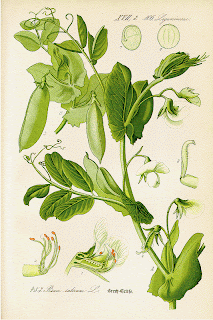Is there a way to distinguish the genotype of an organism expressing the dominant phenotype? The answer is YES! Mendel devised a method called test cross, where an organism of dominant phenotype but unknown genotype is crossed with a homozygous recessive individual.
Mendel's postulates of inheritanceMendel's postulates of inheritance - Mendelian genetics
Mendel's first three postulates of inheritance
1. Unit factors in pairs Genetics characters are controlled by unit factors that exist in pairs in an individual. If these factors appear in pairs, three combinations are possible: TT, Tt and tt. 2. Dominance / recessiveness When two unlike unit factors responsible for a single character are present in a single individual, one unit factor is dominant to the other, which is called recessive. 3. Random segregation During gamete formation, the paired unit factors segregate randomly so that each gamete receives one or the other with equal chances. |
Monohybrid inheritance - Mendelian genetics
A monohybrid cross is a cross that involved only one pair of contrasting traits.
From Mendel's experiments, he noticed that:
1. If he crossed a true breed tall pea plant with a true breed dwarf pea plant, all offspring in F1 generation were tall.
From Mendel's experiments, he noticed that:
1. If he crossed a true breed tall pea plant with a true breed dwarf pea plant, all offspring in F1 generation were tall.
2. If he intercrossed two tall pea plants from the first generation, some offspring in F2 generation were tall while the rest were dwarf.
He continued to test six other traits in a similar manner and his observations were as below:
One parent must be homozygous dominant (TT) while the other mist be homozygous recessive (tt).
Tall must be dominant because it is expressed in all F1 offspring.
Only one outcome (Tt) is possible.
Three of every four F2 offspring showed dominat phenotype while only one showed recessive phenotype.
Average dominant to recessive ratio is 3:1.
From these observations, Mendel derived the first three postulates of inheritance.
Gregor Johann Mendel - Mendelian genetics
Johann Mendel, a monk in St. Thomas' monastery in Brno, Vienna, has a wide interests from religion to botany and mathematics. In 1866, he published the results of a series of experiments that laid the foundation of Genetics. In the following years and early 20th century, he established the concept of the gene as a distinct heredity unit and methods by which genes are transmitted from parents to offspring. These concepts or principles are now known as Mendelian or Transmission Genetics.
Mendel decided to use garden pea (Pisum sativum) to test his idea about inheritance.
Why garden pea?
1. Pure-bred varieties are available
2. Well-defined characteristics
3. Reproduce well
4. Hermaphroditic flower - both male and female
He worked with seven visible characters which were each represented by two contrasting forms / traits:
1. Seed shape (round / wrinkled)
2. Seed colour (yellow / green)
3. Pod shape (inflated / constricted)
4. Pod colour (green / yellow)
5. Flower colour (violet / white)
6. Flower position (axial / terminal)
Subscribe to:
Comments (Atom)







